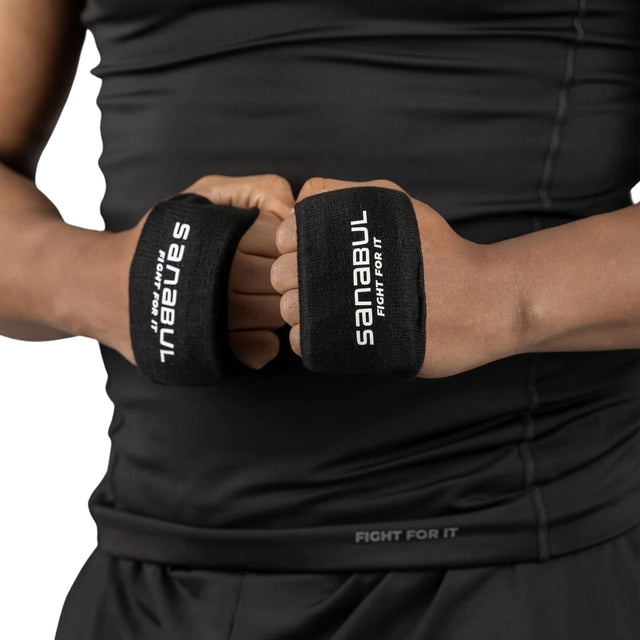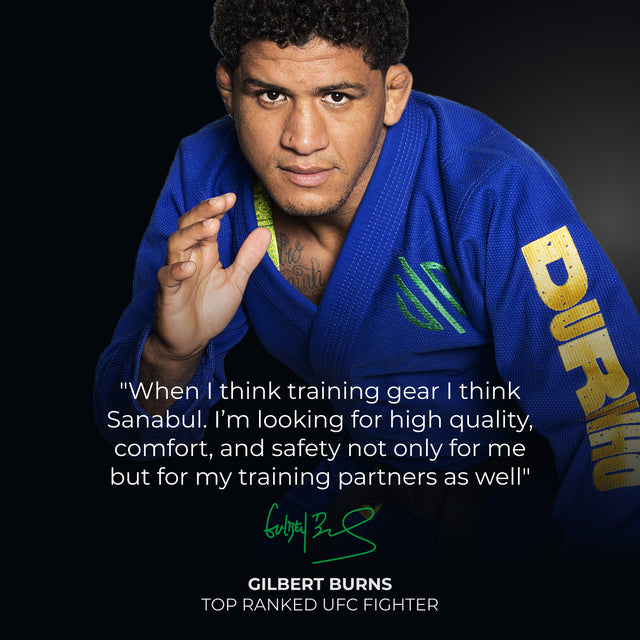Knuckles Guards for Punching and Boxing Training
Striking practitioners know from experience that your bones and skin can take a lot of wear and tear over the course of one training session. When punching and kicking a heavy bag, your bones (knuckles and shin bone) will bear almost, if not, all of the initial impact from your strikes.
Assuming you have proper technique, kicking can be considered a little bit easier on the body than punching is, comparatively. When you kick, one large bone (the tibia, aka the shin bone) will connect with your target. It is more dense and can seemingly handle impact better than a group of smaller bones in your hand, when you punch.
Think of it using this example: you have one very thick branch and a group of smaller sticks. When you swing the thick branch at a telephone pole (in a similar motion to a kick), it does not break, it only absorbs the impact. When you stab or swing the group of sticks at the telephone (in a similar motion to straight and hooking/looping punches), it also absorbs the impact, but not as securely as the bigger branch does. This is symbolic of kicking vs punching.
The bones we connect with on kicks are bigger than the bones we connect with on punches, which is why there seem to be less shin bone injuries than hand bone injuries (also why shin bone injuries are that much more excruciating to watch - they’re not expected to happen due to how much stronger they seem to be). While a number of different factors such as proper training, recovery, and technique all play a role in these injuries, major hand bone injuries seem to be more common than major leg bone injuries.
The same idea can be applied when it comes to minor injuries, such as bruising and skin tears. Your shins can definitely bruise easier and more seriously than your knuckles over the course of training. But with the volume that punches are thrown at, compared to kicks, a lot of people will often experience more knuckle bruising than shin bruising.
Another overlooked aspect of training is skin conditioning. When kicking, you’re not only conditioning your shin bones, you’re conditioning other parts of your body like your angle joints (to support your bodyweight on one leg when pivoting) and your skin. The skin over your shin, on the ball of your foot, your toes, and all the parts of the bottom of your base leg (supporting leg that is on the ground when you pivot during a kick) all gradually get tougher over time, to be able to withstand the wear and tear of training. This is why the skin of beginner practitioners may rip or tear off easier than someone who has one, five, or even ten or more years of training than them - their skin is not as conditioned to training, yet.
The same principle stands for punching, except it’s much easier for the skin on your knuckles to tear, than it is for the skin over your shin to tear (also known as a shin split). This is due to a number of factors:
(1) Punching is much quicker than kicking. You can throw at least double the amount of punches, in the same time that you could throw one kick. The volume of impact that the skin on your leg will endure is much lower than the volume that the skin over your knuckles will.
(2) When you punch, your knuckles will most likely be covered with something: wraps, gloves, or both. When you kick, your bare shin or the padding of a shin guard will connect with a target. The inside of nearly all shin guards is smooth, so abrasion from sweat and friction will not be an issue. The material of hand wraps and the inside of boxing gloves can feel smooth at first, but when combined with sweat, they can start feeling rough. When your skin is moist/wet with sweat, it’s easier for it to rip when force is introduced. Now when you introduce the force of your punches, repeatedly, for hours, to your already wet from sweat skin, it makes sense why the skin on your knuckles may rip.
Knuckles bruising and cuts (or skin tears) over your knuckles can definitely hinder your training, when it comes to throwing punches. If you don’t want to stop training or are in a training camp preparing for an upcoming competition, continuing to punch with bruised/cut knuckles may make the bruising worse or the tear even larger. So how can you continue training with these minor knuckle setbacks?
Knuckle guards may be the answer you’re looking for. Knuckle guards are a thin, firm piece of padding that covers your punching knuckles (all knuckles except your thumb knuckle). They can be worn on their own or with hand wraps (hand wraps will give you a more secure fit than just wearing them on their own, as they essentially turn into a hand wrap with a lot more padding).
But when you sweat, won’t they start feeling rough and still tear open your skin when they rub against your knuckles on forceful punches – similar to handwraps?. No. Or at least, they shouldn’t.
The padding of the knuckles guard is covered by a smooth material, which will not (or should not) feel abrasive when you punch. This will allow you to keep punching, without creating new or larger skin tears on your knuckles. Combined with the thin, but firm layer of padding, the bruising will not happen as easily and existing knuckle bruises shouldn’t hurt as much or increase in size as much as they would when training without the guards.
Knuckle guards are a great bang for your buck item. If your bag gloves are wearing thin, consider grabbing a pair of knuckles guards instead of replacing your gloves. You get additional padding, and don’t have to get an entirely new pair of gloves (applies to bag/pad gloves ONLY. Gloves you use in sparring should have adequate padding to protect your training partners and mitigate their risks of injury)
Thank you for reading - we hope this article was helpful. If you’re interested in getting your own pair of knuckle guards, please consider purchasing the Sanabul Essential Knuckle Guards, found here!





0 Comments
There are no comments for this article. Be the first one to leave a message!